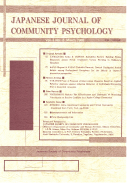Volume 3, Issue 2
Displaying 1-7 of 7 articles from this issue
- |<
- <
- 1
- >
- >|
Original Articles
-
2000Volume 3Issue 2 Pages 63-76
Published: March 30, 2000
Released on J-STAGE: October 02, 2021
Download PDF (9682K) -
2000Volume 3Issue 2 Pages 77-90
Published: March 30, 2000
Released on J-STAGE: October 02, 2021
Download PDF (1386K)
Review Articles
-
2000Volume 3Issue 2 Pages 91-101
Published: March 30, 2000
Released on J-STAGE: October 02, 2021
Download PDF (5321K)
Case Reports
-
2000Volume 3Issue 2 Pages 102-114
Published: March 30, 2000
Released on J-STAGE: October 02, 2021
Download PDF (4136K)
Academic Essay
-
2000Volume 3Issue 2 Pages 115-117
Published: March 30, 2000
Released on J-STAGE: October 02, 2021
Download PDF (269K)
-
2000Volume 3Issue 2 Pages 118-121
Published: March 30, 2000
Released on J-STAGE: September 17, 2020
Download PDF (4152K) -
2000Volume 3Issue 2 Pages 122-124
Published: March 30, 2000
Released on J-STAGE: September 17, 2020
Download PDF (331K)
- |<
- <
- 1
- >
- >|
